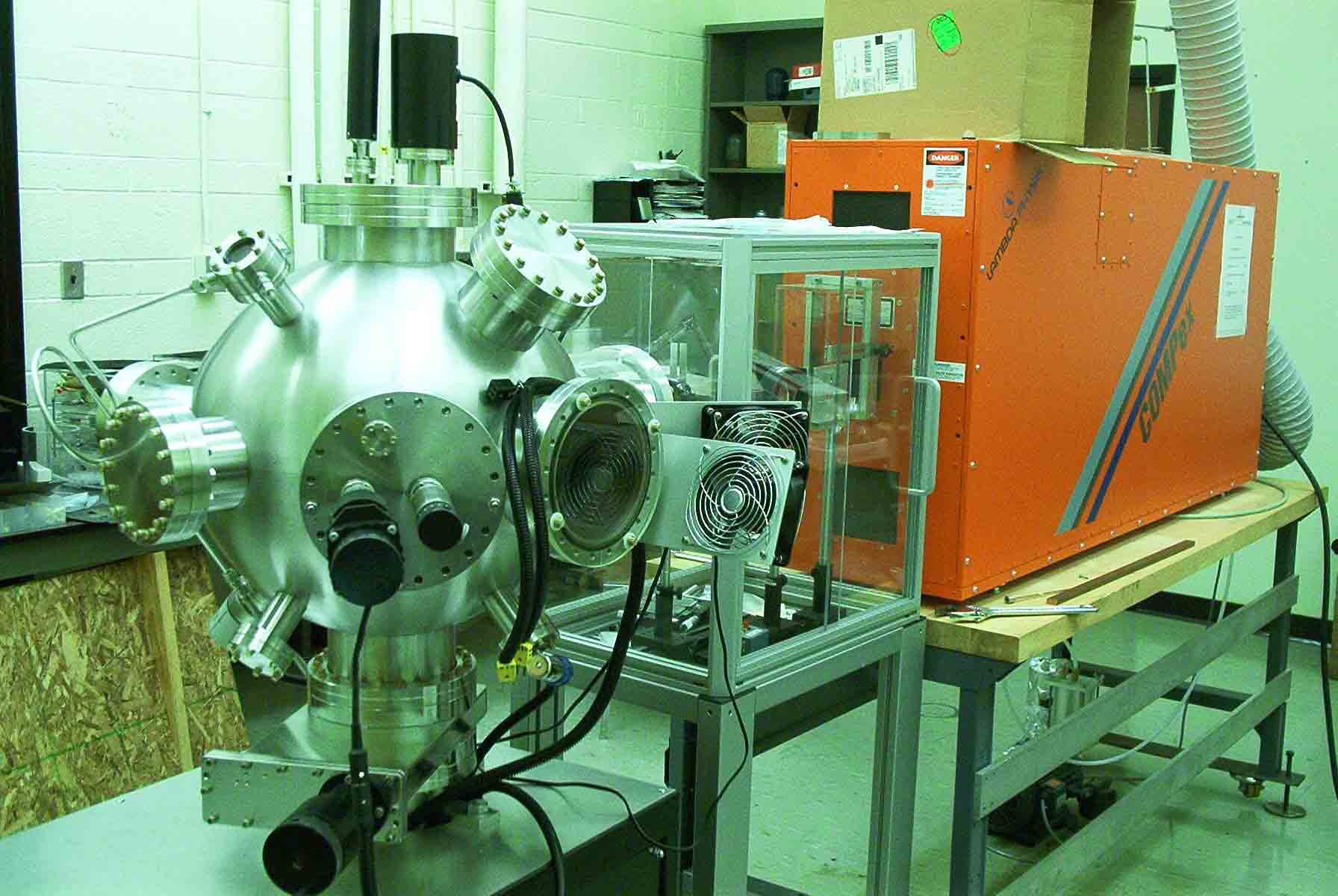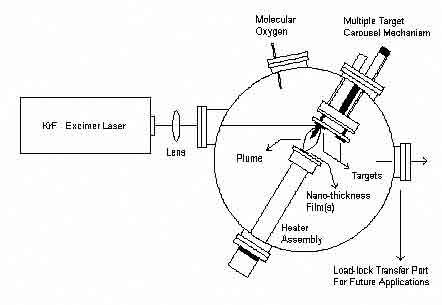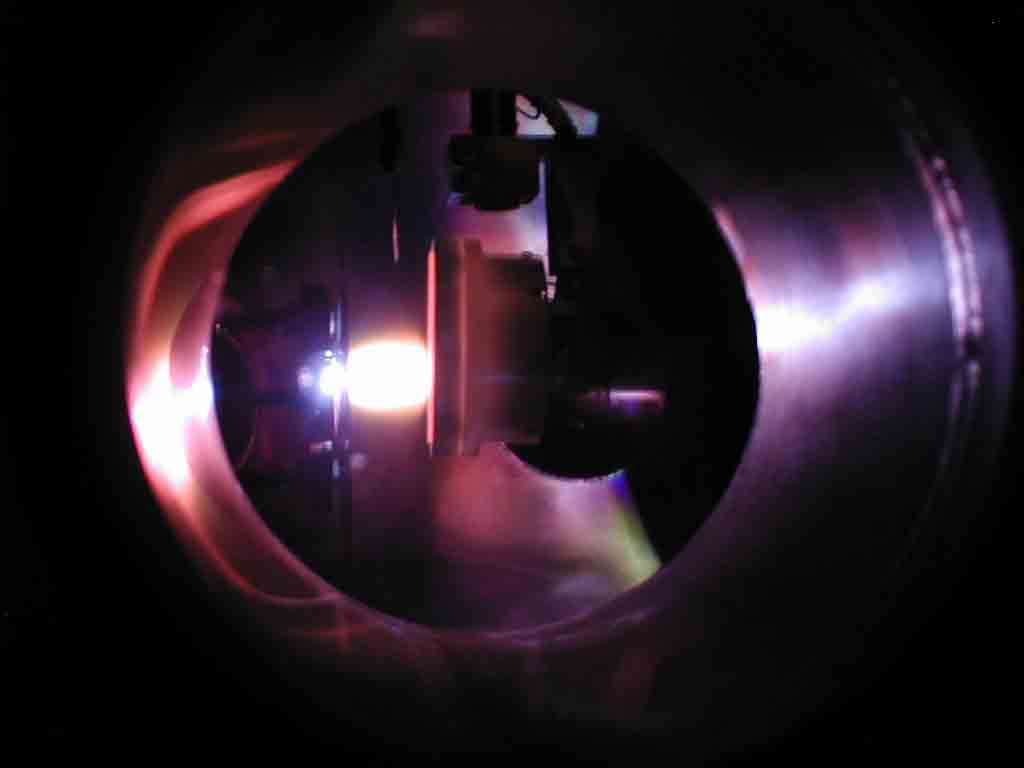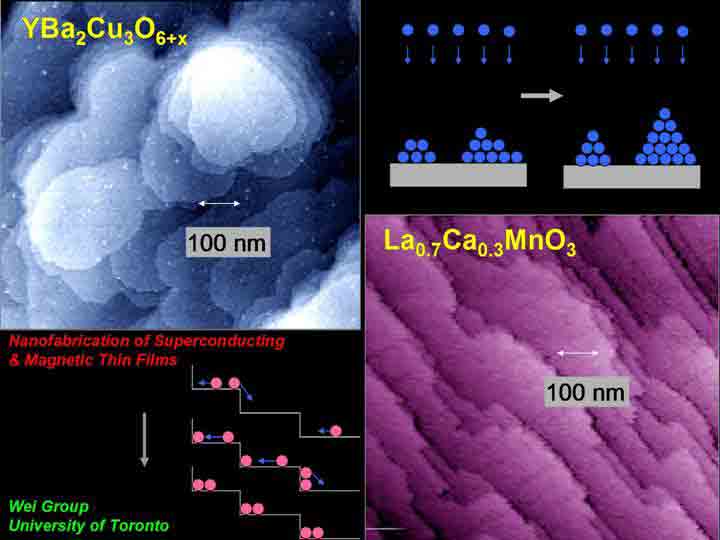Wei GROUP
Laser Deposition Lab (MP 071)
Pulsed laser deposition is a powerful technique for growing epitaxial
thin films of complex oxides, by virtue of its thermodynamic range and
experimental flexibility. It has emerged as the method of choice
for nanoscale materials research on complex oxides, particularly the
transition-metal perovskites which have very rich phase diagrams and
show a variety of correlated eletronic phenomena. These phenomena
include high temperature superconductivity, colossal magnetoresistance
and magnetoelectronic multiferroism, which may lead to a new generation
of oxide-based microelectronic devices based on complex oxides.
Pulsed Laser
Deposition system



The surface
morphology of the the epitaxially grown films depends on the exact
growth mode. Two typical modes are: step-flow growth, which
lead to fishscale-like terraces; mount-clump growth, which produce
rice-paddy surface structures. The surface quality can be
characterized by imaging with either AFM or STM, with nanometer
resolution. Film epitaxiality can be confirmed using x-ray
diffraction with rocking-curve analysis. Overall film quality
depends on the material and ablation conditions, and can be optimized
through close feedback between synthesis and characterization.
For the latter, our PPMS system enables measurement of various physical
properties, such as resistivity and magnetization, versus both
temperature and magnetic field.

We are currently installing a second laser deposition system, donated from IBM T.J. Watson Research Center. This state-of-the-art system has a high-power excimer laser with adjustable wavelength, plus an ultra-high vacuum chamber which is equipped with RHEED and atomic oxygen source. The differentially-pumped RHEED gun provides real-time monitoring of the film deposition, to enable true layer-by-layer growth in unit-cell blocks approaching atomic smoothness.